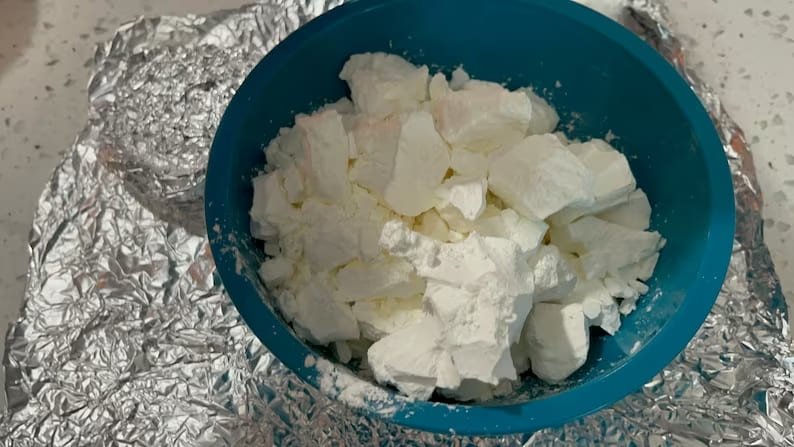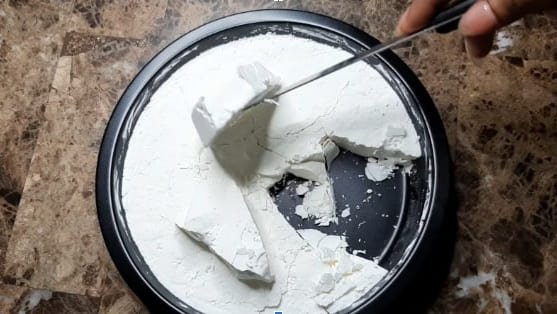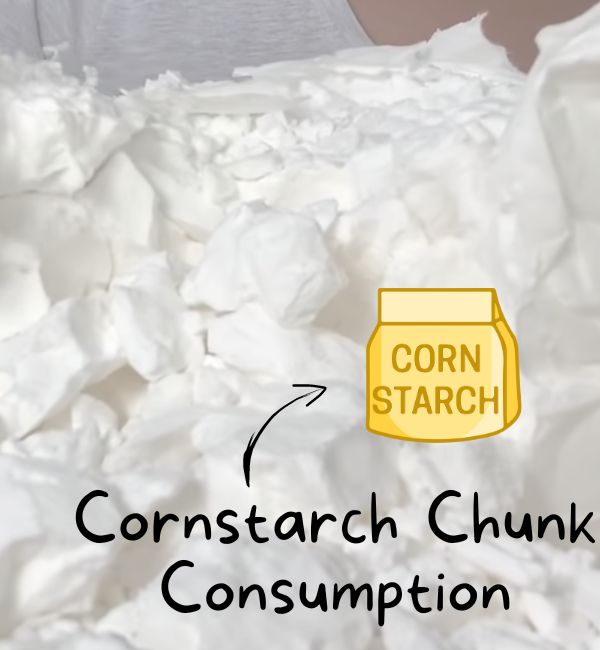A peculiar trend has emerged in recent years, with reports of individuals consuming cornstarch chunks as a snack. This behavior has raised eyebrows and sparked discussions about such a practice’s potential benefits and side effects. In this article, we will explore the reasons behind this trend and the potential advantages and risks associated with eating cornstarch chunks.
Understanding the Trend
The consumption of cornstarch chunks as a standalone snack is often associated with a condition known as pica. Pica is an eating disorder characterized by the persistent craving and consumption of non-nutritive substances, such as clay, ice, or starch. While the underlying causes of pica can vary, it is believed that factors like nutrient deficiencies, mental health conditions, or cultural practices can contribute to this behavior.
Why Peoples Do Eat Cornstarch Chunks?

We found and gathered some possible reasons why people are eating cornstarch chunks and discuss the potential factors that contribute to this trend.
Texture and Mouthfeel
One reason people may be drawn to eating cornstarch chunks is the unique texture and mouthfeel they offer. The crunchy yet powdery consistency of cornstarch can provide a satisfying sensory experience, similar to biting into a crispy snack. Some individuals find the tactile sensation of chewing on cornstarch chunks enjoyable, leading them to consume it as a snack.
Cravings and Pica
Consuming cornstarch chunks can also be associated with a condition called pica. Pica is an eating disorder characterized by persistent cravings and the consumption of non-food items. It is believed that certain nutritional deficiencies, such as iron or zinc, may contribute to these cravings. Some individuals with pica report a specific desire for starchy or powdery substances like cornstarch, clay, or chalk. While the exact causes of pica are not fully understood, it is thought to be influenced by a combination of biological, psychological, and cultural factors.
Cultural and Culinary Practices
In certain cultures, the consumption of unconventional food items or ingredients may be part of traditional culinary practices. Cornstarch, due to its availability and affordability, may have found a place in certain cultural cuisines, where it is used as a thickening agent or as an ingredient in desserts. As a result, some individuals may have been introduced to the idea of eating cornstarch chunks as a familiar taste or cultural preference.
Oral Fixation or Sensory Stimulation
For some people, eating cornstarch chunks may be driven by an oral fixation or a need for sensory stimulation. Chewing on objects or substances can serve as a source of comfort or stress relief. The act of consuming cornstarch chunks, with their unique texture and mouthfeel, may provide a sensory experience that satisfies these needs.
Social Media Influence
The power of social media cannot be underestimated when it comes to trends and viral sensations. The sharing of experiences, challenges, and unconventional eating habits on platforms like TikTok or Instagram can significantly influence individuals’ behaviors. Seeing others consume cornstarch chunks or witnessing its popularity online may encourage some individuals to try it out themselves, even if they do not have a specific underlying reason for doing so.
Is Easy to Make Cornstarch at Home?
Yes, it is relatively easy to make cornstarch at home. “To make cornstarch chunks, you need to mix cornstarch with water until you get a smooth texture. There are different methods for making cornstarch chunks, such as using an oven or a microwave.” Explains Helen Knight, cooking expert, and recipe maker at SolveKitchenIssue.
Cornstarch Consumption Side Effects

Consuming cornstarch, commonly used as a thickening agent in food, can have unintended health consequences. Excessive intake of cornstarch may lead to various side effects. Being aware of these risks helps us make informed dietary choices for a balanced and healthy lifestyle.
Nutrient Imbalances
Cornstarch lacks essential nutrients like vitamins, minerals, and proteins. Depending heavily on cornstarch in your diet can cause nutritional deficiencies if it replaces healthier, more nutrient-rich foods.
Blood Sugar Spikes
Consuming large amounts of cornstarch, which is mainly composed of carbohydrates, can cause rapid increases in blood sugar levels. This can be problematic for individuals with diabetes or those aiming to maintain stable blood sugar levels.
Digestive Issues
Excessive cornstarch consumption may result in digestive problems like bloating, gas, and constipation. The lack of fiber in cornstarch can disrupt regular bowel movements and affect overall digestive health.
Dental Health Concerns
Frequent or excessive consumption of cornstarch can contribute to tooth decay. The high carbohydrate content serves as a food source for oral bacteria, which produce acids that erode tooth enamel.
Conclusion
The increasing consumption of cornstarch chunks can be attributed to sensory cravings, misconceptions about safety, and the influence of social media. While it may seem tempting to partake in these unusual eating habits, it is crucial to prioritize health and consult healthcare professionals for dietary guidance. Remember, moderation and a balanced diet are vital for a happy and nourished life.
You may also like
-
The Timeless Joy of Backyard Cookouts
-
Indian Food Takeout: Challenge of Retaining Texture in Takeout Curries
-
Getting Halal Certification in USA for Your Food Business
-
Why You Should Reserve a Table at Your Favorite Indian Restaurant
-
Why Late-Night Fast Food Runs Are a Southern Tradition – And Where to Find the Best Picks

